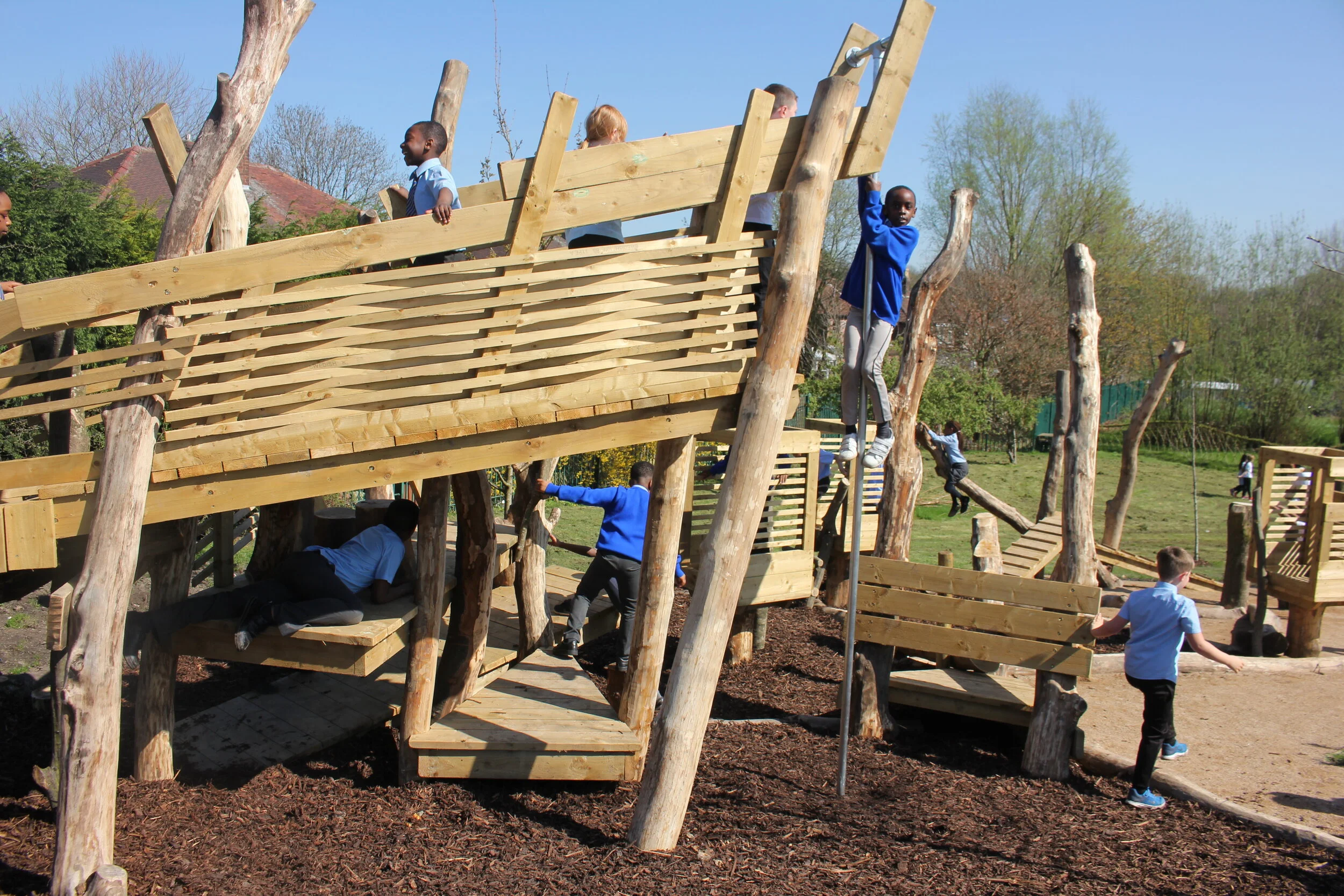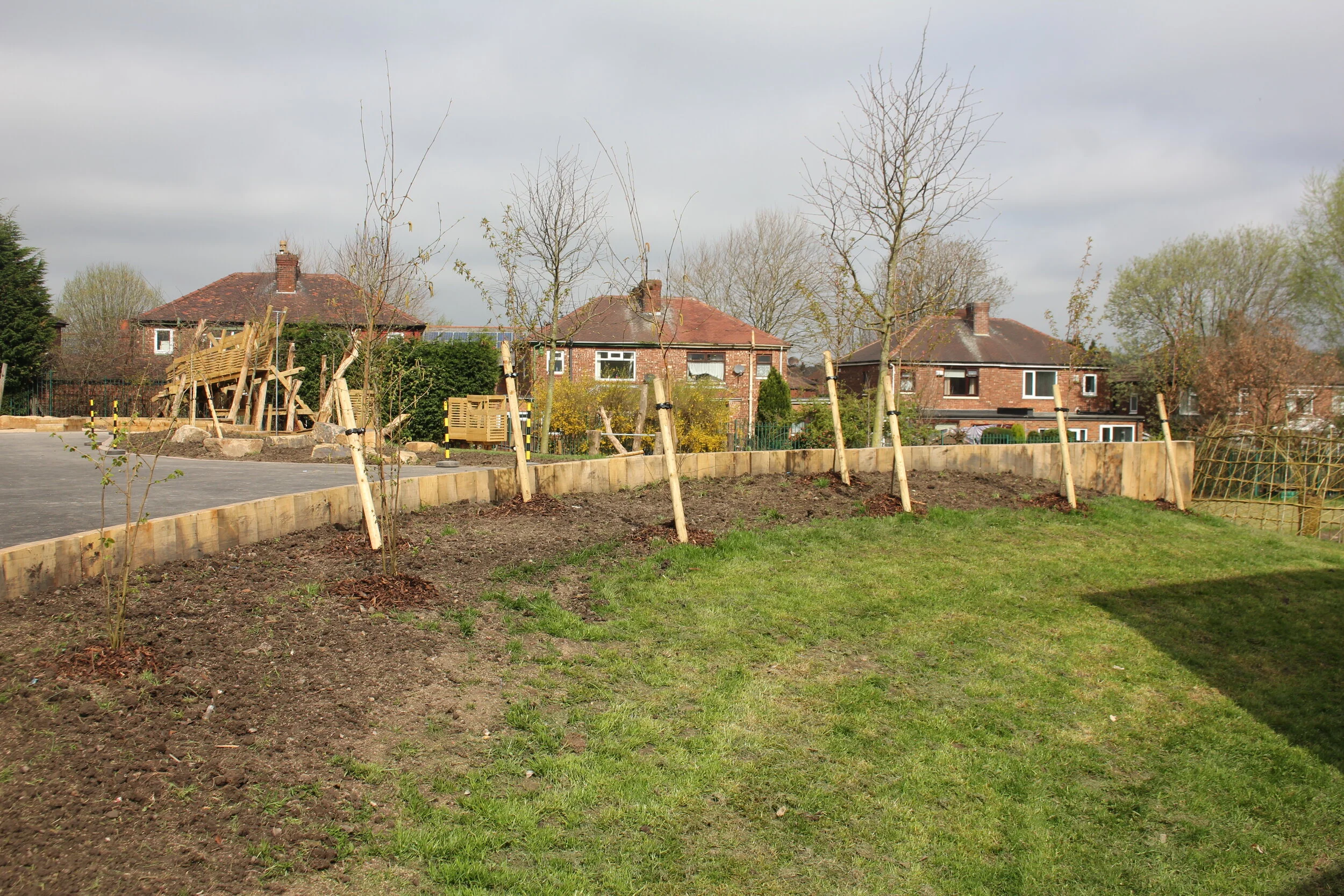St Dunstans RC Primary School
Again the development at St Dunstans in Salford is the result of a series of builds across three years.
The photographs tell the story and so I include some of the inspiration from the world conservation congress of 2012.
From the World Conservation Congress written a decade ago, this I feel underlines the intention of ourselves and the communities we work with and is more relevant now than ever before.
WCC-2012-Res-101-EN
Child’s right to connect with nature and to a healthy environment
OBSERVING that there is a significant decline in the quality and quantity of children’s direct
experience with the natural world as a result of global developments such as urbanization
(already 50% of the world population lives in cities and this will be 70% in 2050 according to
predictions of the United Nations), biodiversity loss, deforestation, industrialization and
environmental degradation;
RECOGNIZING that there is a widely shared concern about the increasing disconnection of
people and especially children from nature, and the adverse consequences for both healthy
child development (‘nature deficit disorder’) as well as responsible stewardship for nature
and the environment in the future;
BUILDING ON Resolution 4.105 Communication, education and public awareness (CEPA) in
conservation adopted by the 4th IUCN World Conservation Congress (Barcelona, 2008),
which acknowledges the vital importance of connecting children and nature, and states that
“connecting children to nature as part of their everyday lives in meaningful ways tends to be
a precursor to their growing up as adults with passion and commitment to work actively in
support of conservation of the environment and natural resources” and in addition requests
the IUCN Director General to assist the IUCN membership in reconnecting people, especially
children, and nature as a priority in order to assure responsible stewardship of the
environment for the generations to come;
DEEPLY CONCERNED about the significant consequences of increasing environmental
problems such as climate change, species extinction and degradation of ecosystems, for the
lives and development of children, the most vulnerable group of society in this respect, and
for their future;
CONVINCED that children, since they are an inalienable part of nature, not only have the
right to a healthy environment, but also to a connection with nature and to the gifts of nature
for their physical and psychological health and ability to learn and create, and that until they
have these rights they will not bear responsibility for nature and the environment;
ALSO CONVINCED that growing up in a healthy environment and connecting children with
nature is of such a fundamental importance for both children and the (future of) the
conservation of nature and the protection of the environment, that it should be recognized
and codified internationally as a human right for children;
WELCOMING the identification of human rights issues as a cross-cutting issue within IUCN
and the IUCN Rights Based Approach mandate based on Resolution 4.056 Rights-based
approaches to conservation adopted by the 4th IUCN World Conservation Congress
(Barcelona, 2008);
FURTHER WELCOMING the significant and substantial work done by the IUCN
Environmental Law Centre (ELC) in collaboration with the IUCN World Commission on
Environmental Law (WCEL), aiming to further develop the concept of a rights-based
approach to conservation, among others in the publication Conservation with Justice: a
rights-based approach;
NOTING that the concept of a child’s right to connect with nature and a healthy environment
fits with the Rights Based Approach to conservation, since it contributes positively to the
valuation and conservation of nature and to the realization of existing children’s rights – such
as the right to life and development, health, an adequate standard of living and the right to
engage in play;
The World Conservation Congress, at its session in Jeju, Republic of Korea, 6–15
September 2012:
1. ENDORSES the child’s right to nature and a healthy environment, which includes inter
alia:
a. the child’s inherent right to connect with nature in a meaningful way, as a substantial
part of his or her everyday life and healthy development, and to enjoy, maintain and
strengthen this connection through the direct and ongoing experience of nature;
b. the child’s right to live in an environment that is not harmful to his or her health or
well-being, and to the assurance of the conservation of nature and the protection of
the environment, for the benefit of present and future generations; and
c. the child’s right to be equipped for the responsibility to help address the
environmental challenges he or she will, unfortunately, be confronted with, and to
help realize a sustainable world that values nature and where people live in
harmony with nature;
2. CALLS ON IUCN’s governmental and non-governmental Members, its Permanent
Observer Mission to the United Nations and the Director General to:
a. promote and actively contribute to the international acknowledgment and
codification of the child’s right to nature and a healthy environment within the United
Nations human rights framework, preferably in an additional protocol to the
Convention on the Rights of the Child; and
b. help introduce the draft text “The child’s right to nature and a healthy environment”
on the agenda of the United Nations Human Rights Council; and
3. REQUESTS the Director General in collaboration with the Secretariat and the IUCN
World Commission on Environmental Law (WCEL), within the scope of their mandates,
to:
a. contribute to the further development and knowledge of the legal concept: the child’s
right to nature and a healthy development as part of the rights-based approach to
conservation; and
b. advise on the draft text “The child’s right to nature and a healthy environment” and
provide guidance on the aims to be achieved and actions to be undertaken in order
to have this right recognized and codified within the framework of the Convention on
the Rights of the Child.
















